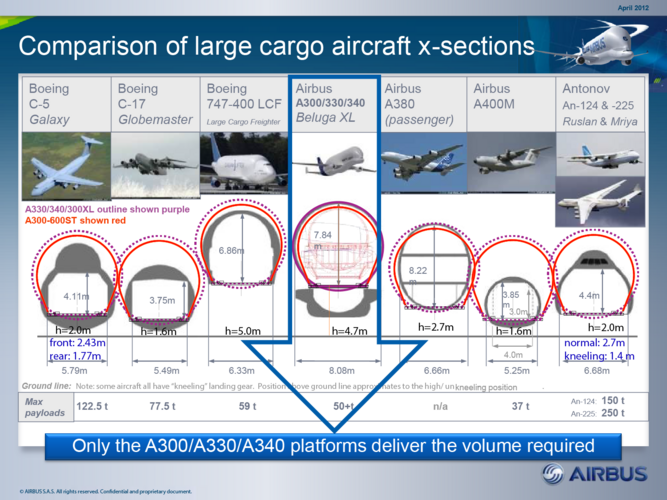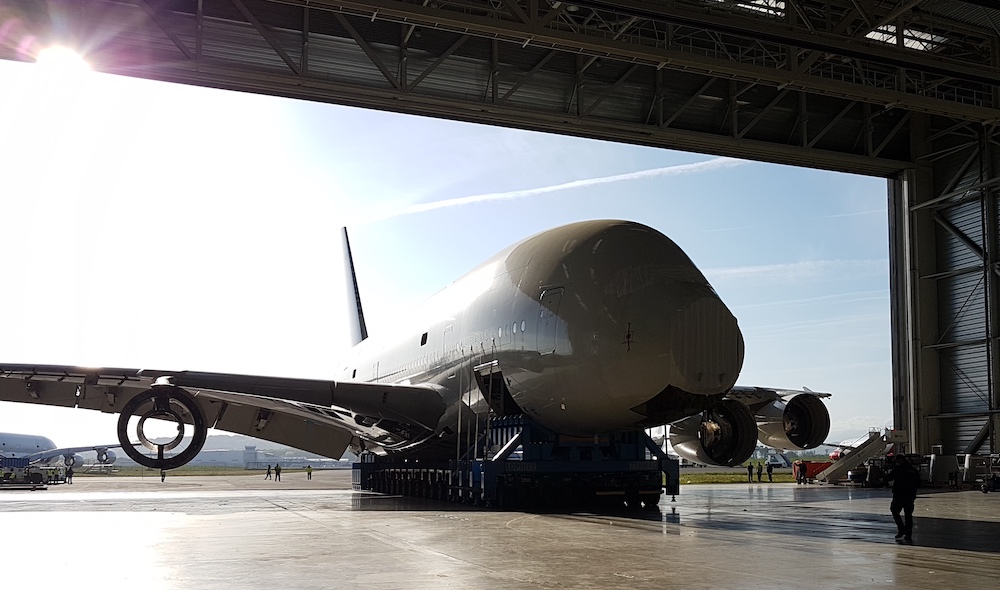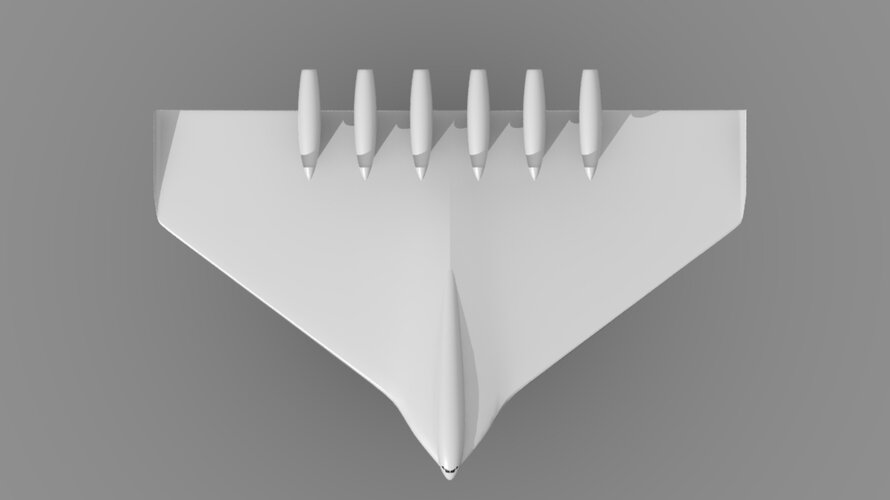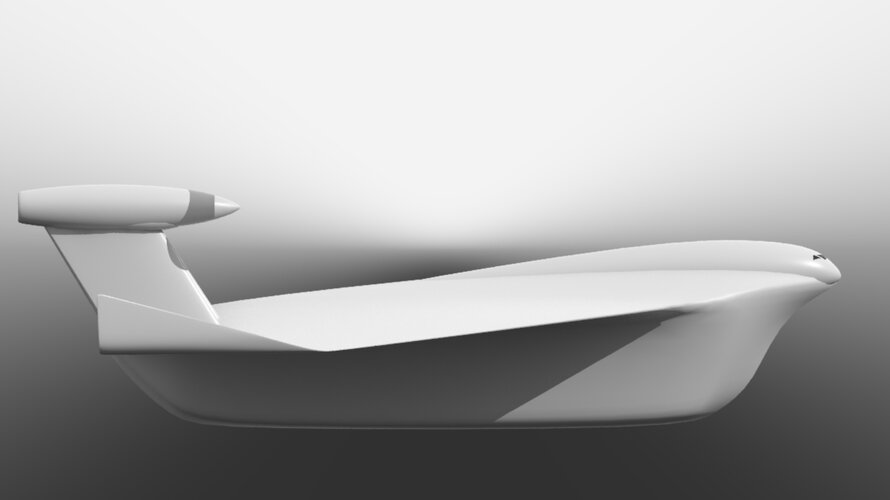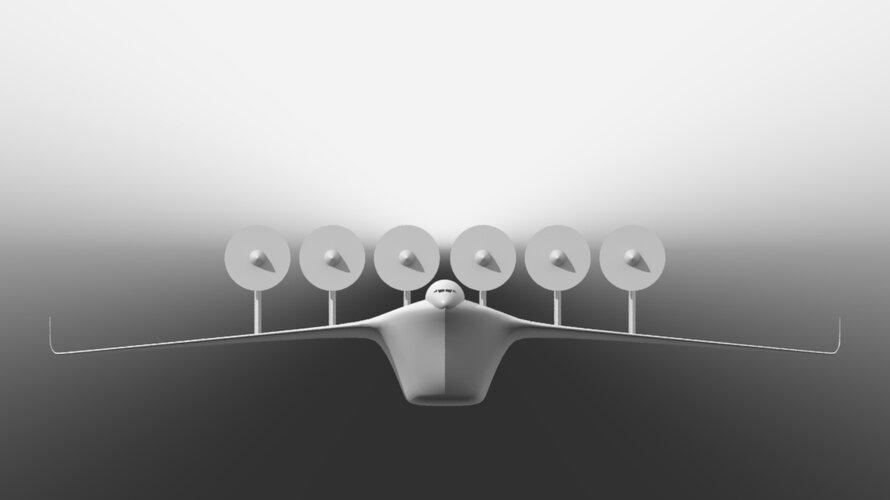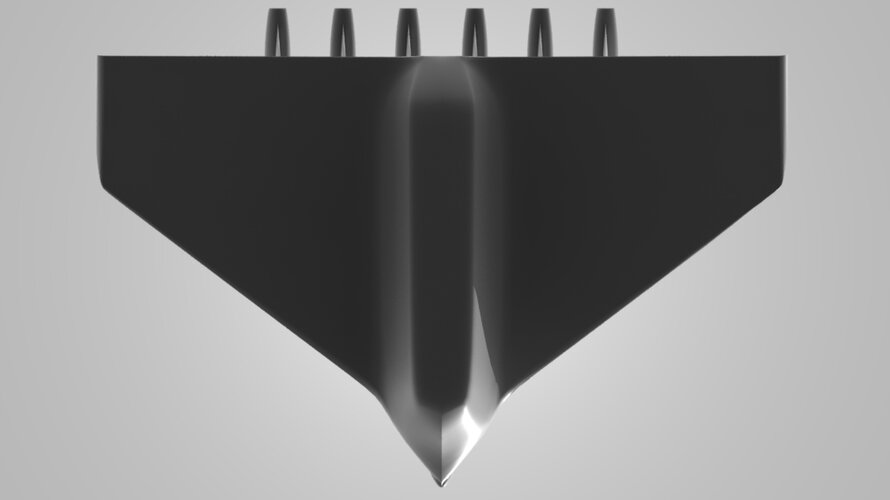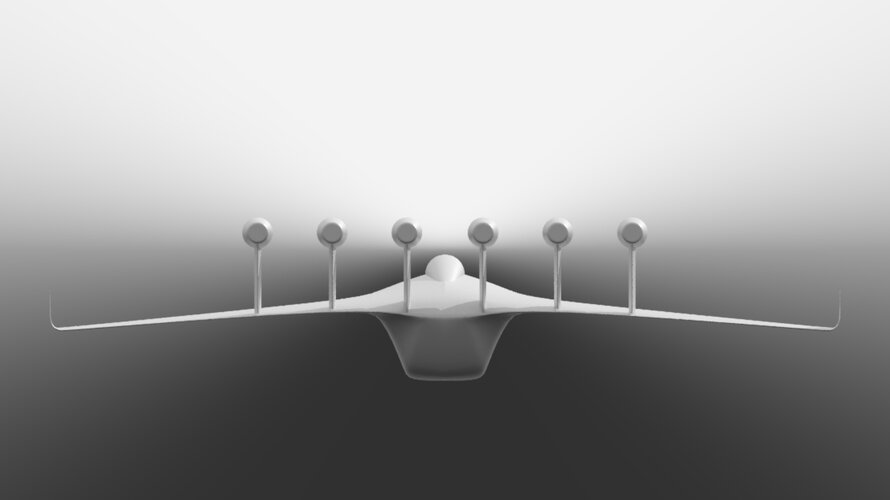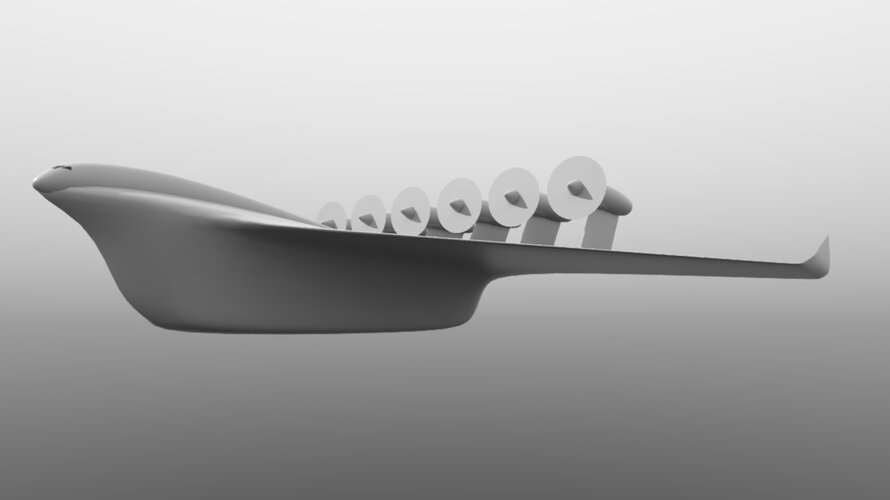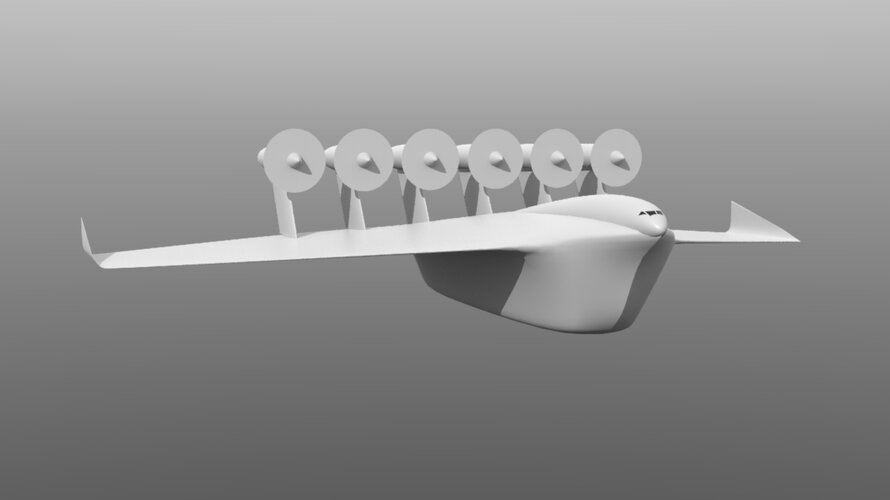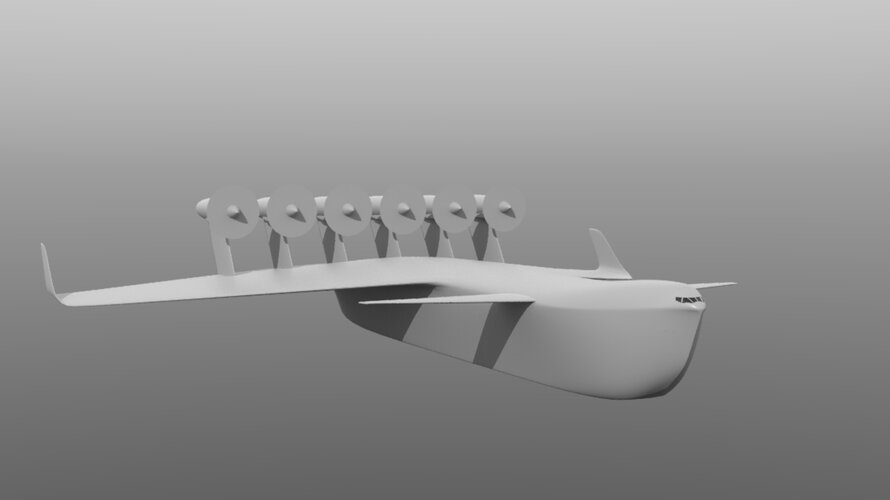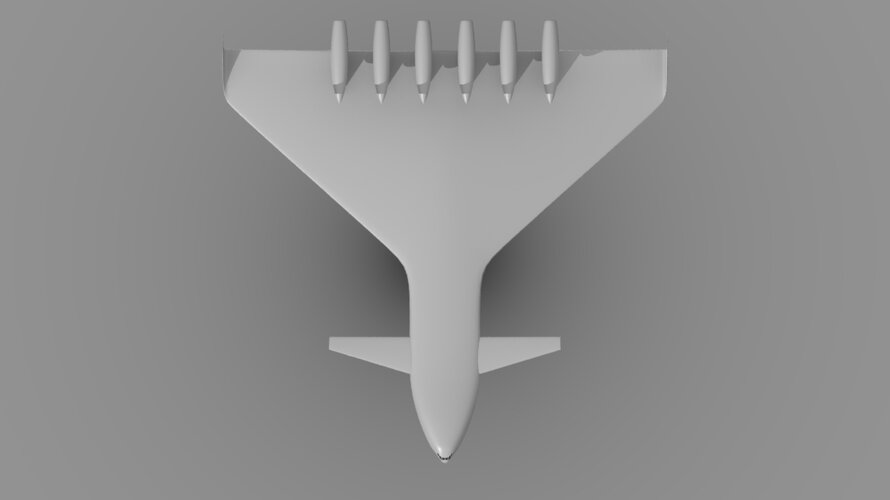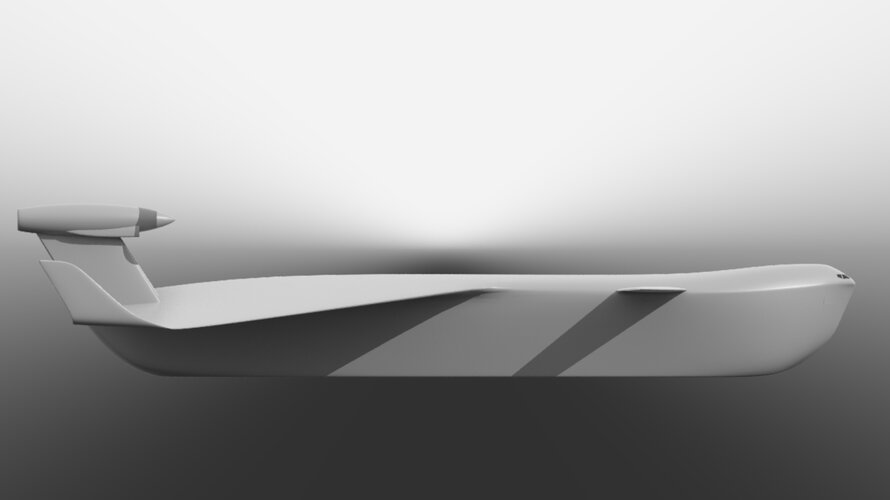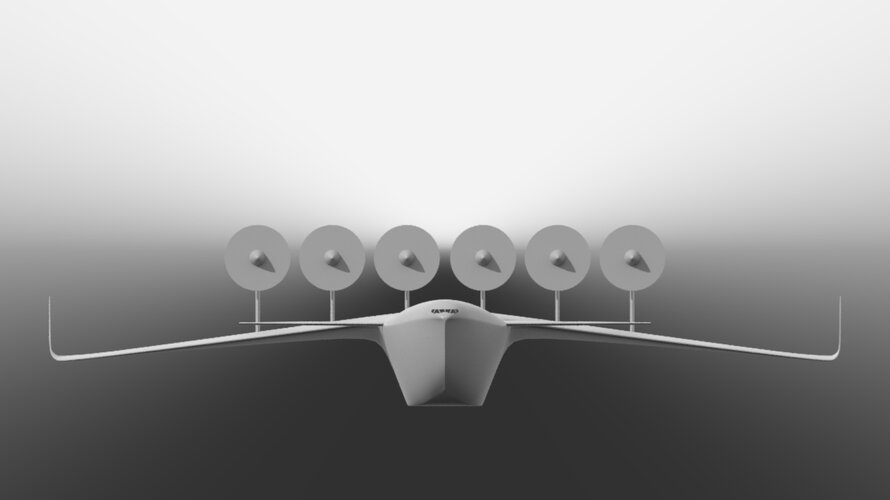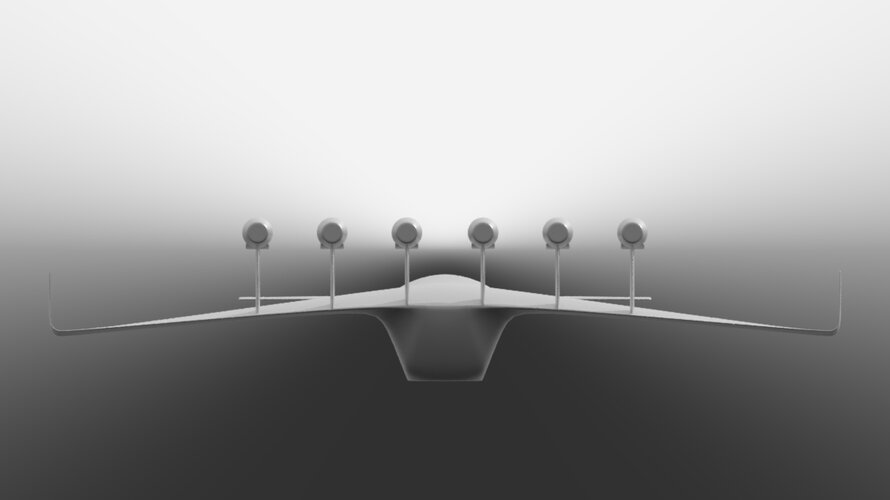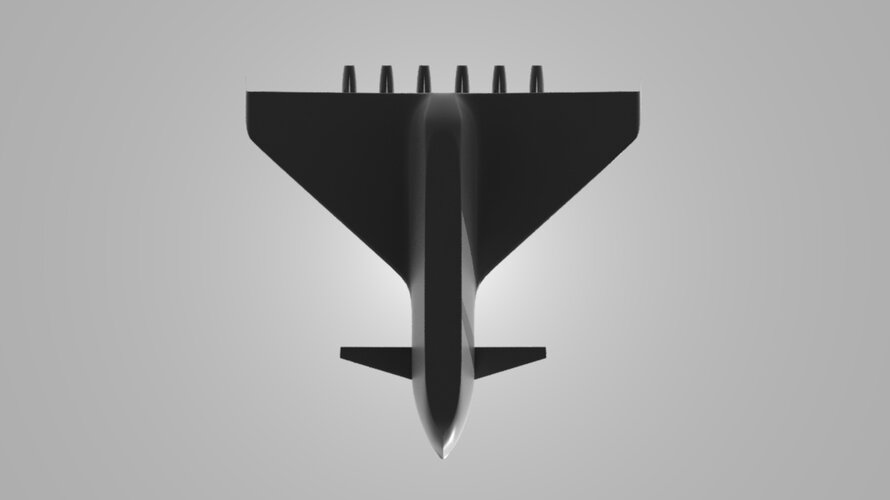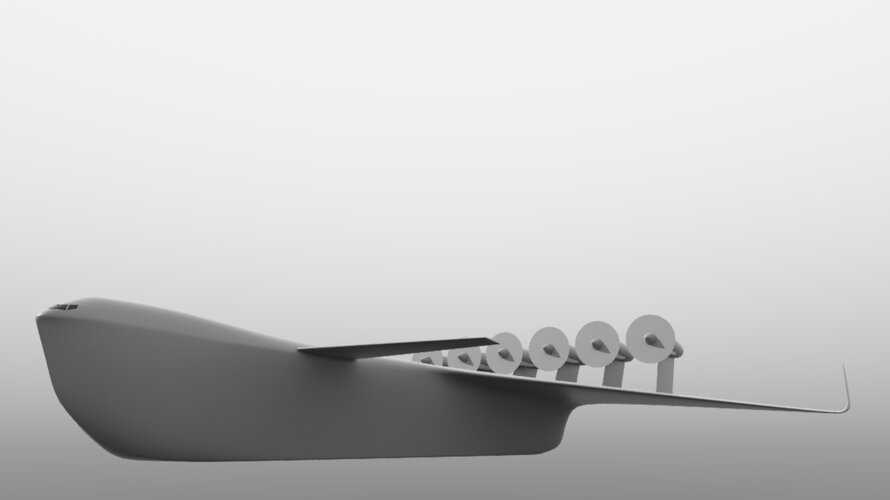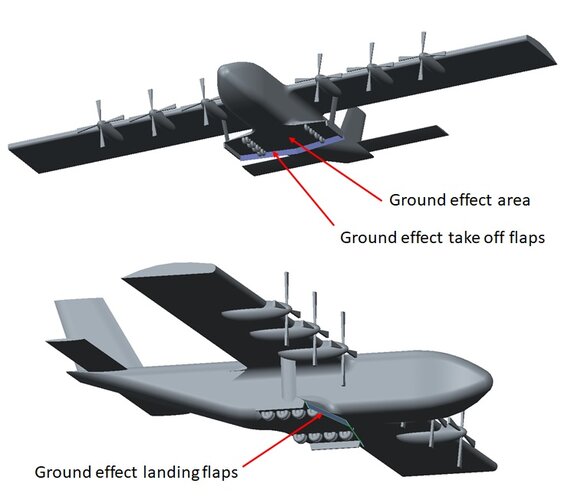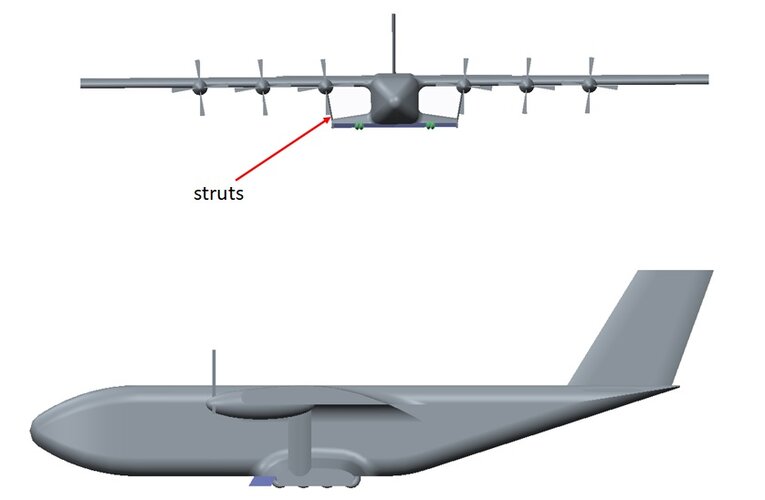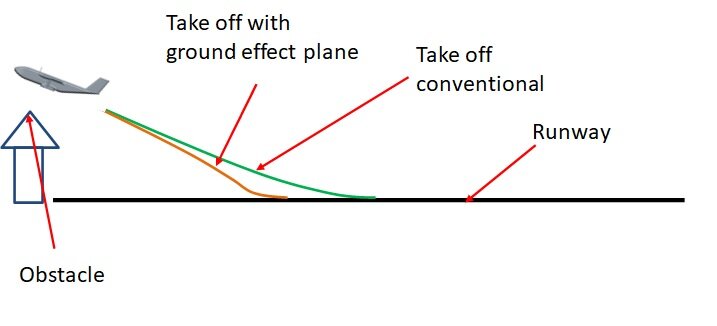I have made a concept of a future(istic) heavy lifter.
As I am an artist and not a mechanical engineer, things could be wrong.
Feel free to give some input.
I based my design on that of a flying wing, but those with a separate cockpit above the nose and a belly to carry stuff.
The nose is equipped with 2 clamshell-doors that open to reveal a huge interior.
The internal volume is enough to carry a 7m diameter tube that is 30m long.
The tail can house a loading ramp. (But can not offload that 7m diameter tube.)
There are 6 turboprops ( thanks Nicknick for the idea) that have a 6.66m diameter ( The devil really is in the details

propeller. ( I know next to nothing about turboprops and how big they should be..Any help here?)
The engine pylons also act as tails to keep the plane on course.( I think they are too thick?)
I think the plane will make very smooth landings with that enormous wingsurface.
Comments are welcome

Trust an amateur to invent a viable solution.
Your drawings remind us of the Horten Brothers' DINFIA IA 38 Naranjero. They built that huge flying wing to haul oranges (fruit) from their orchards to market. It first flew in 1960 in Argentina.
One advantage of that huge flying wing is that it provides plenty of wing area to produce excess lift that allows for slow take-off and landing speeds. Yes, it has too much wing drag for high-speed cruise, but who cares about cruise speed when your primary mission is delivering "impossible" sized cargo?????
Flying wings do require more precise balancing of cargo, but canards or tail feathers are still optional.
That huge wing volume will allow you to install a variety of "trim" fuel tanks (ala. Concorde SST).
Conventional swept winged flying wings use wing twist to help with pitch stability. OTOH, planks (ala. Backstrom and Fauvel) and deltas (e.g. Dyke and Verhees ) use stable airfoils that do not need external control surfaces (canards or tail feathers) for pitch stability.
Swept flying wings use conventional (pitch unstable) airfoils, then twist wing tips to improve pitch stability.
You can get the same pitch stability by installing helicopter blade airfoils that are reflexed (trailing edge curved up) and already self-stable in pitch, without external control surfaces.
Your design already has plenty of tail moment arm length to help with pitch stability.
Your long, parallel cargo-compartment side-walls provide a convenient place to mount a dozen or more low-pressure tires ... to reduce point-loading and protect soft asphalt runways. The long foot-print also helps with stability on the ground. If you want to get fancy, you can vent air from tires and landing gear struts to "kneel" the airplane for loading.
With that thick wing, you don't really need a separate, semi-submerged fuselage protruding from the top skin of the wing. The wing is probably deep enough to conceal a cockpit without any added height. Just install plenty of windows in the center leading edge and mount the pilots' seats far enough forward that they can see their own wing tips.
At first glance those pylon-mounted props look like something "borrowed" from Mr. Bel Geddes airliner proposal of the 1930s, but they do carry a certain logic in that they allow "borrowing" large, tractor, turboprop engines from existing production airframes (e.g. Tupolev 95 BEAR bomber).
Pylon-mounted rudders might help during cross-wind landings, but you are probably still going to need drag-rudders mounted on wingtips (ala. Northrop flying wings).
Since the primary function of winglets is to increase wing span (and aspect ratio) you are probably going to need taller winglets.
I have tried to provide an encouraging critique of your proposal. It has merit. The only things that I would change are "sinking" the cockpit and increasing the height of winglets.

